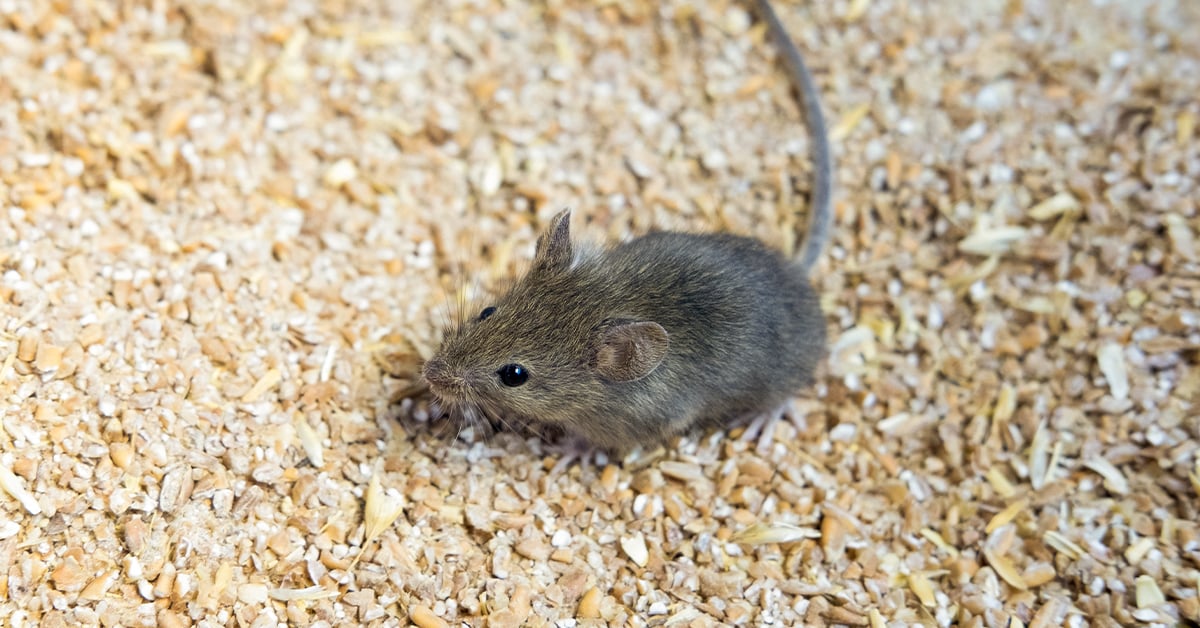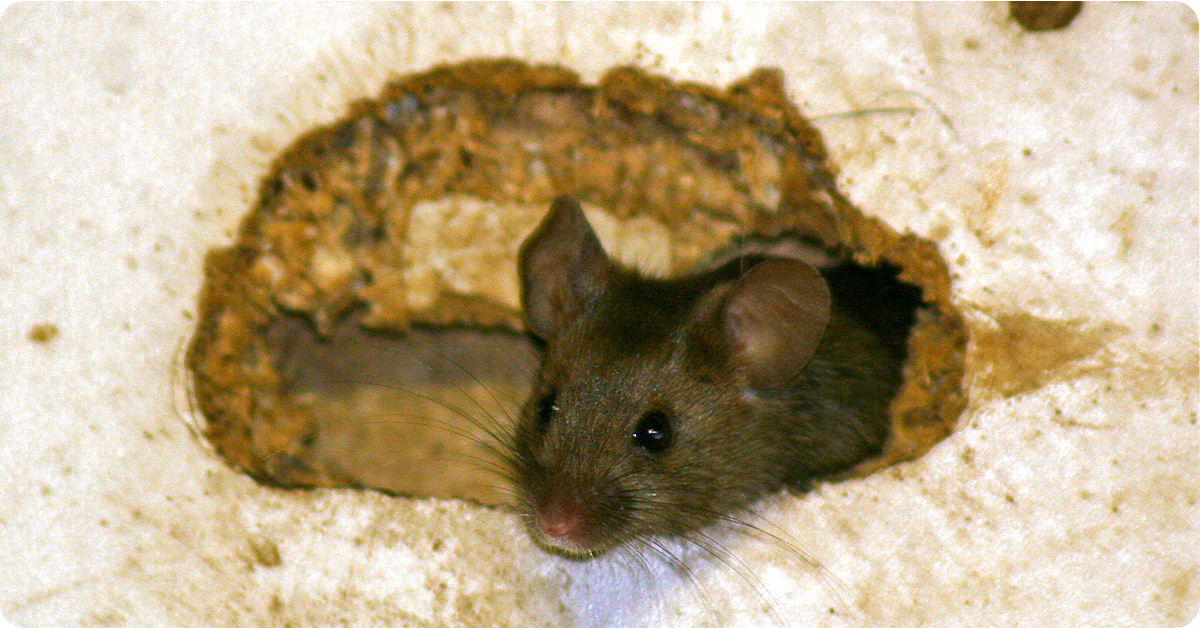
Mice, rats and other vermin are notorious for causing extensive damage to homes and buildings. Their constant need to gnaw can compromise a building’s structure and even be a main cause of electrical fires by damaging wiring. Not only that, the small vermin are common transmitters of dangerous diseases, making it vital to protect your home and property against them.
Whether you’re a homeowner, agricultural producer or simply opposed to the thought of sharing your space with small vermin, consider these six tips for preventing and managing any current or future infestations.
Tips for Preventing Rodents
1. Seal Possible Entrances
The very best way to protect against rodents is to keep them out. Seal any gaps or holes in your building’s structure by placing steel wool in the opening and putting caulk around it to keep things in place. You can also use cement, hardware cloth or metal sheeting to fix any larger holes.
Inspect the inside and outside of your home, garage and/or barn for potential openings each fall before temperatures drop. Keep in mind that some rodents such as mice can fit through openings the size of a single nickel.

2. Properly Store Potential Food Sources
You are more likely to attract rodents if there is a readily available food and water source nearby. Properly storing any potential food sources can help prevent vermin from invading and more importantly, staying in your home by eliminating a necessary resource.
Any possible food sources for rodents should be stored in thick plastic or metal containers with tight lids. Mice and rats cannot gnaw through these materials thus protecting your food and lowering incentives for the rodents to stick around.
Consider all types of potential food sources rodents might be drawn to in your buildings and manage accordingly.
Home and Garage:
Obvious food sources will be in your pantry or food storage. Ensure any grains or food packages in cardboard or thin plastic are transferred to sealed storage containers. Flour, sugar, rice and other products purchased in bulk can easily and safely be stored in food-grade five gallon buckets.
A less obvious food source might be any pet food or treats that you store inside. Use buckets with lids, specially designed pet food storage containers or even trash cans with sealed lids to store large quantities.
You should also adhere to scheduled feeding times to ensure no kibble or food is simply laying around throughout the day or night.
Barn:
Whether you have chickens, horses, goats, pigs, cattle or whatever else, you are very likely to have more than a few food selections rodents enjoy. Like with pet food, you should store any bagged feeds (supplements, grains, scratch, etc) in specially designed feed bins or trash cans with sealed lids.
Hay or hay cubes stored within your barn can be a little more difficult to protect. Be sure to keep these off the floor by storing them on pallets, railroad ties or even 2x4 wood boards and safely set traps around the feed to manage any rodents trying to make it their home.
3. Keep Area Clean and Clear of Possible Nesting Sights
Rodents are more likely to invade and even nest in homes or areas where they can easily hide. By keeping the areas of your home and buildings clean, you are eliminating potential nesting and hiding sights.
Keep areas clean and clear of clutter and store trash and food waste in rodent proof containers. This will cut down on hiding and nesting sights within your home or other building.
You should also consider possible nesting spots outside near your home as this could encourage unwanted neighbors to move in. Elevate any hay, wood piles and garbage cans near the structure or store 100 or more feet away. You should also remove any old vehicles, tires or other objects within this range.
Prepare for winter with these essential tips, technologies and materials in clothing and footwear >>
Tips for Managing Rodents
4. Effective Trapping Strategies
Traps are a common method used to eliminate rodent populations. The traps come in a variety of options from live traps to glue and traditional snap traps.
The type of trap you use should be determined by the type of rodent you are trying to manage. There are specific traps for mice, rats and other vermin and you should confirm the trap you select is designed for your particular pest by reading the packaging.
Use a high calorie food such as peanut butter or soft cheese to attract the rodent(s). Place the food in the correct area of the trap and be sure to follow instructions on the label when setting.

5. Choosing the Right Bait and Bait Stations
Another option to manage rodent populations is by using baits and bait stations. Rodenticides are specially designed baits that disrupt the biological processes of rodents and ultimately eliminate the vermin when proper amounts are ingested.
Baits are an effective option when managing large rodent infestations if properly used and strategically placed. Depending on your needs and situation, you might consider baits that are effective after one just one feeding or others that require multiple feedings over several days but cause less secondary risk to pets and non-targets.
Recommendations for Homeowners
Ridding your house of pesky rodents can be tricky, especially if you have pets or small children to worry about. Luckily, there are a variety of products specifically designed for the needs of various home owners.
Kaput Rat and Mouse bait is one great option for pet owners. The bait uses warfarin, which is effective at controlling rodent populations after multiple feedings with a much lower risk of harm to pets and other non-targets in the case of accidental exposure.
If you have a more severe infestation you might need a single-feeding bait. Motomco’s line of Tomcat products provide homeowners with effective rodent control. The baits are sold in smaller packages and perfect for use in bait stations if children and pets are around. However; this bait does pose more risk for secondary exposure.
When managing rodents with bait, it is a good idea to rotate active ingredients every winter to avoid rodent resistance.
Recommendations for Ag producers:
Ag producers are likely to deal with more frequent rodent infestations due to the amount of feed and shelters regularly found on the premises. With this in mind, ag producers are able to purchase stronger rodenticide baits in larger quantities.
Just One Bite blocks and pellets are a single-feeding solution to major rodent infestations. They can be placed in major problem areas or near possible nesting sites for fast and effective rodent management.
Weather-resistant options for agriculture rodent control include Tomcat All-Weather Bait Chunx and Ramik Green 4lb Nuggets. Both options are proven all-weather rodenticides that are especially great for wet or damp areas and will kill rodents in 4-5 days with lethal dose.
Benefits of Bait Stations
Baits* can be more effective when used with a bait station. Bait stations help keep the bait contained and some can even be locked to better ensure the safety of pets and children. The stations also serve as a sort of shelter while the rodent(s) feed making it more likely that an adequate amount will be ingested.
*Be aware that using baits instead of traps could result in foul odor if rodents die within walls. Using a bait station does not ensure the rodent will die within the bait area.
6. Introducing Natural Predators
A final management strategy you might consider is introducing a natural predator to your property. This can take time and though it can help cut down on rodent populations, is not a 100% effective management strategy.
Barn Cats
Introducing a barn cat can help you manage rodent populations around your barns and property but you will need to incentivize the animal to stick around. You can do this by providing an area for the animal to sleep such as a bed or space in your barn or garage.
Provide water sources and food in moderation to encourage the feline to supplement its own diet with hunting rodents.
Owls
Owls are another option of a natural predator that could possibly be introduced to your property. This can be a little more difficult as they are primarily wild animals, but you can try to attract owls by providing water, shelter and a nesting location.
If you do wish to encourage natural predators to help you manage rodents avoid using rodenticide baits as these can affect predator animals that consume affected rodents.
Keeping Pets and Kids Safe
Proper use and storage of rodent control with pets and kids around is very important to ensure safety and avoid accidents. If you are using traps you should be sure to place them in an area where young children and pets will not come into contact with it.
Bait and bait stations should be stored out of reach of children and pets. When not in use they should be in a locked cabinet or on an inaccessible shelf. If you are baiting with children or pets around you should consider using a tier 1 or tier 3 bait station with safety measures in place.
Non-Harmful Rodent Control Options
Even with bait stations and careful controls, pets and even kids could still come into contact with rodents that have died after ingesting the bait. If this is a concern, consider using a non-harmful bait such as RatX and MouseX.
RatX and MouseX are a pellet bait option that does not contain chemicals harmful to humans or pets. The pellets are grain-based and contain a chemical that affects the nervous system of rodents leading to severe dehydration.
These products do require multiple feedings to be lethal and are not as effective as other control options but should be considered if bait exposure is a concern.
Let us Help
Stop by your local IFA Country Store for storage, trap and bait options and to find the tools you need to seal any gaps or holes before rodents find their way inside.
Be sure to read all directions and labels and please ask an IFA team member for further assistance when deciding the right rodent control strategy for your situation.
Information for this article was provided by Dan Jensen, IFA Outdoor Cooking and Barn Supply Category Manager; Centers for Disease Control, Prevent Rodent Infestations











